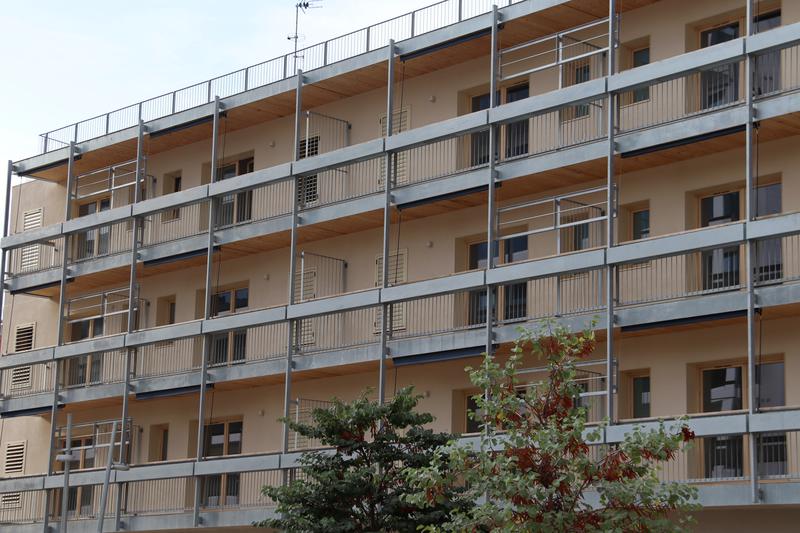Barcelona looks to industrial methods for new social housing projects
City to construct 381 new flats with innovative and more sustainable methods

Barcelona is taking a new approach to social housing, utilizing innovative new methods in construction.
The city council's Municipal Institute of Housing and Reformation (IMHAB) is currently developing numerous projects to construct 381 new apartments with industrial methods.
The buildings are mostly made from CLT wood panels and blocks that have come pre-made from a factory, as well as cement. The apartment block at Carrer Binèfar, in the Sant Martí neighborhood, was shown off to the media on Tuesday morning, before it's expected to be inhabited as soon as next month.
The industrial construction methods are targeted at reducing the environmental impact associated with the construction of the materials. The council calculates that production of these buildings reduced CO2 by 30% compared to a conventionally built apartment block.
The wooden materials, CLT wood panels, slabs, walls, beams, steps, and other necessary pieces of laminated wood, are cut and prepared in a factory after being collected sustainably from forests. The blocks are then assembled on-site, allowing for the automation of design and production processes.
The whole construction process is faster with this method, an important point for the council, taking between 1-1.5 years to build, compared normally two years for an equivalent project.
In addition, costs were roughly the same using these methods compared with a conventionally built building.
Construction of four apartment blocks in the Sant Martí neighborhood were started toward the end of 2022 and early 2023, and will be completed this year, providing homes for 150.
In total, the housing project using these innovative, sustainable and industrialized processes comprises 381 flats in nine different developments.
The homes will have official rent protection in most cases ('habitatge de protecció oficial' in Catalan), and official protection of the right of surface rent in some ('habitatges de protecció oficial de lloguer de dret de superfície').
Legal "exception" and request to ministry
This novel approach, constructing buildings through more sustainable and faster methods, has been made possible thanks to the joint tendering process and contracting of the architects and the builders to develop the projects. Normally, the architectural and construction contracts are separated into different public tender offers.
In this way, architects and builders have been able to work together from the very beginning, speeding up the building process by around 35%, according to the council.
Barcelona deputy mayor, Laia Bonet, explained on Tuesday in a press conference at the apartment building on Carrer Binèfar that this type of contracting was "an exception," and that the council has sent a request to the Ministry of Housing and Urban Agenda for this process to be regularized.
"We want it to be a regular possibility, especially in cities declared areas of a tense housing market," Bonet pointed out. "We need to be able to reduce construction times and these projects help with that," she added.